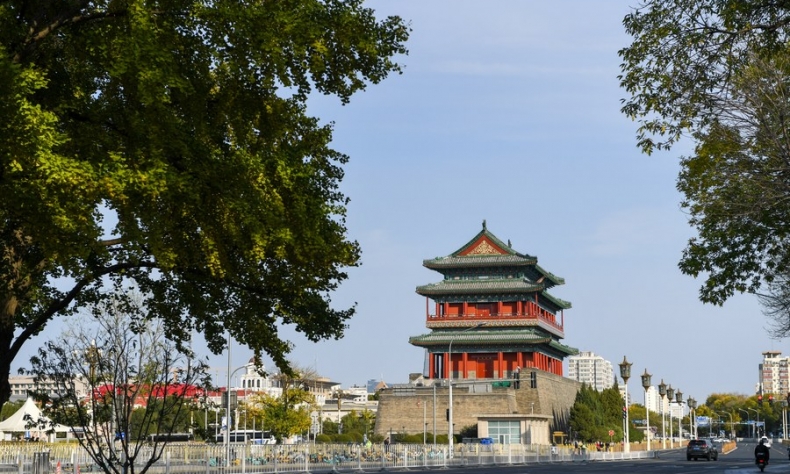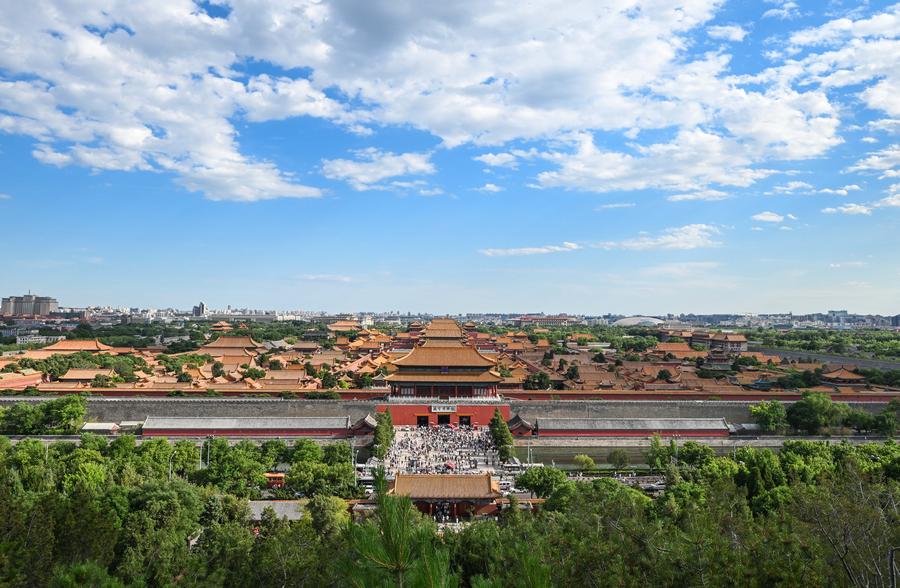Beijing’s Central Axis Crowned with World Heritage Status

The Central Axis is more than just a series of historic landmarks. A symbol of China and a piece of world’s heritage, it invites us to reflect on our shared human heritage and the timeless values that bind us.
For a nation, having a local legacy recognized as a World Heritage site is a prestigious accomplishment. It brings immediate global recognition, economic opportunities, and responsibilities, while supporting the preservation of the cultural and historical heritage.
Located in the heart of Beijing, the Central Axis is a testament to China’s rich cultural heritage and architectural ingenuity. Stretching 7.8 km from the Yongding Gate in the south to the Bell Tower in the north, this historic axis is not just a backbone of the city’s layout but also a symbol of its enduring significance.
On July 27, the United Nations Educational, Scientific and Cultural Organization (UNESCO) announced that the Beijing Central Axis had been included in UNESCO’s World Heritage List during the 46th session of the World Heritage Committee held from July 21 to 31 in New Delhi, India.
The important acknowledgement, which comes after more than one decade of preparations during which the municipal government initiated more than 100 renovation projects for cultural relics, has become China’s 59th World Heritage Site—a prominent national emblem on the global stage.
The Central Axis is a masterpiece of ancient urban planning, dating back to the Yuan Dynasty (1271-1368) and further developed during the Ming (1368-1644) and Qing (1644-1911) dynasties. This meticulously planned line of symmetry reflects the traditional Chinese cosmological belief in harmony between humanity and the universe. The alignment of the Forbidden City, Tiananmen Square, the Temple of Heaven and the Drum and Bell Towers along this axis highlights their significance in the historical narrative of Beijing.
Each landmark tells a story of imperial power, cultural achievement and philosophical depth. The Forbidden City, with its magnificent palaces and courtyards, served as the imperial palace for 24 emperors, symbolizing the heart of political authority. The Temple of Heaven, where emperors conducted sacrificial ceremonies, represents the spiritual connection between heaven and earth. Its architectural grandeur not only illustrates China’s historical significance but also serves as an educational resource for understanding the cultural evolution of one of the world’s oldest civilizations, spanning over 5,000 years.

The Central Axis’ designation as a UNESCO World Heritage Site underscores its value as a cultural treasure of global importance. This recognition brings international attention to the importance of preserving such sites, offering a framework for sustainable development and heritage conservation. A beacon of traditional Chinese values, the Central Axis invites the world to appreciate the philosophical and aesthetic principles that shaped one of its most enduring civilizations.
The recognition of the Central Axis as a UNESCO World Heritage Site also has economic and touristic implications. It enhances Beijing’s status as a leading global city for cultural tourism, attracting millions of visitors eager to explore its historic treasures. The influx of tourists not only boosts the local economy but also fosters a greater appreciation for cultural heritage, encouraging investments in preservation and education.
Furthermore, the Central Axis inspires a new generation of architects, planners and historians to explore innovative ways to integrate traditional values with modern urban development. It serves as a model for cities worldwide seeking to balance economic growth with heritage conservation, demonstrating that progress and tradition can go hand in hand.
In conclusion, the Central Axis is more than just a series of historic landmarks. A symbol of China and a piece of world’s heritage, it invites us to reflect on our shared human heritage and the timeless values that bind us. In recognizing the axis, we celebrate a vision of the future rooted in respect for the past, a vision that holds the promise of a more harmonious and interconnected world.
The author is a non-resident associate fellow at the Beijing-based think tank Center for China and Globalization.
 Facebook
Facebook
 Twitter
Twitter
 Linkedin
Linkedin
 Google +
Google +










